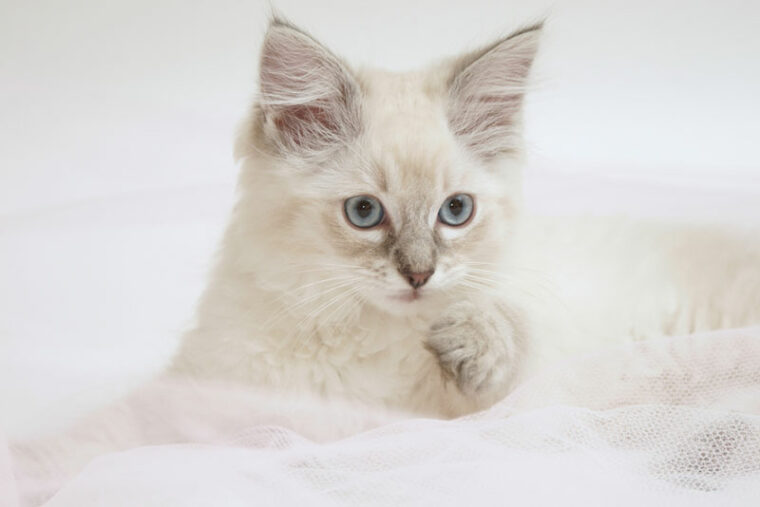
Click to Skip Ahead
There is no mistaking the large, beautiful Ragdoll for any other breed. These truly beautiful cats come in a variety of colors and patterns. One of the most interesting is lilac. The lilac coloring on a Ragdoll is displayed as point markings on the face, ears, paws, and sometimes the tail. It’s also more of a muted grey than true purple or pink.
Aside from their unique coloring, Lilac Ragdolls are the same as all other Ragdolls. While each cat has their own specific personality, they have the same history and general temperament. So, when learning about the Lilac Ragdoll cat, you’re learning about this breed in general.
Breed Overview
Height:
9–11 inches
Weight:
15–20 pounds
Lifespan:
12–15 years
Colors:
Milk white with lilac points
Suitable for:
Families, singles, seniors
Temperament:
Gentle, calm, sociable, affectionate, loyal
The other color variations of Ragdolls include seal, chocolate, cream, red, and blue. Point colors can be solid, lynx, or tortie. All Ragdoll cats have gorgeous blue eyes that seem to sparkle when they get excited. They also have cute pointy ears, button noses, and rounded heads that tend to give them an “angelic” look.
Lilac Ragdoll Breed Characteristics
The Earliest Records of Lilac Ragdoll Cats in History
The Ragdoll’s creator, Ann Baker, has been said to claim that these cats harbor skunk genes and that alien or human DNA was used to alter their genetics! Of course, these are simply rumors. In fact, a doctor by the name of Andrew Nash clinically examined a couple of Ragdolls in the early 1990s and found that there is nothing unusual about their DNA. What really happened is that Ann Baker was breeding an experimental version of the Persian, so she had experience with creating cats.
The owner of the laundromat she worked at had dozens of part-feral cats living on her property, one of which was a pretty white cat named Josephine. Ann noticed that the kittens that Josephine had given birth to had wonderful dispositions, were affectionate to humans, had hair that didn’t mat, and went limp when being handled.
So, she acquired three offspring from one of Josephine’s litters that she named Daddy Warbucks, Fugianna, and Buckwheat. She decided to breed these three cats to make a new variety that would be called the Ragdoll. This happened throughout the early and mid-1960s. Ann patented the Ragdoll cat breed in the 1970s, and the breed made their first appearance at the CFA International Show in 1993.
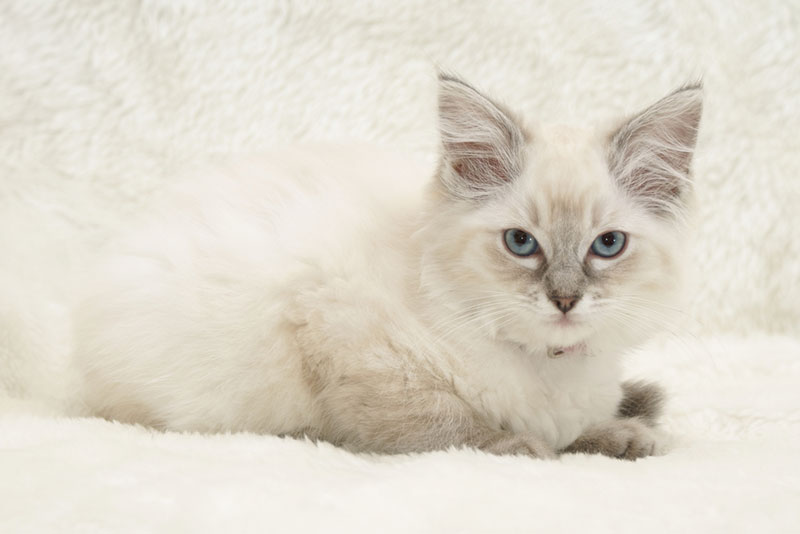
How the Lilac Ragdoll Gained Popularity
Ragdoll cats naturally grew in popularity throughout the years, due in part to the strict standards that were maintained by breeders. Ann Baker ensured that everyone breeding these cats followed the same policies and procedures. She did this by establishing the International Ragdoll Cat Association and setting the regulations for breeders in her program.
The first set of cats Ann sold was to a couple named Laura and Denny Dayton. These two worked on creating distinctly white and darker cats, which is how the Lilac Ragdoll came into existence. They instantly became a popular color variation among fanciers of the breed.
Formal Recognition of the Lilac Ragdoll
Two official organizations recognize the Ragdoll cat breed. One is the Cat Fancier’s Association, and the other is The International Ragdoll Cat Alliance. Lilac was one of the first four colors accepted in these organizations, and it is still accepted and recognized today. The Ragdoll is not the only breed with the lilac coloring; others include Persian, Lykoi, Burmese, and Balinese.
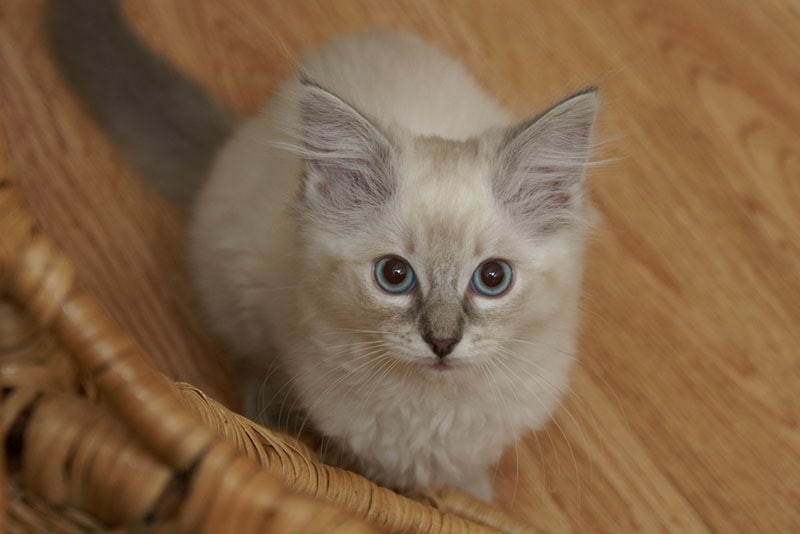
Top 5 Unique Facts About the Lilac Ragdoll
Here are a few interesting facts about Lilac Ragdoll cats and Ragdolls in general that you may want to know as a curious cat fancier or prospective owner:
1. A Lilac Ragdoll’s Coloring Tends to Darken With Age
The breed standards for Ragdolls allow for the darkening of the lilac coloring as a cat grows older. No matter how well a Ragdoll is taken care of, their hair simply tends to naturally darken as they grow into adulthood and their senior years.
2. Lilac Ragdolls Have a Nickname
The word lilac reminds people of the color purple, so some cat enthusiasts lovingly refer to them as purple cats. However, the coloring on the Ragdoll is more of a muted grey color, so the description of a “purple cat” doesn’t quite match.
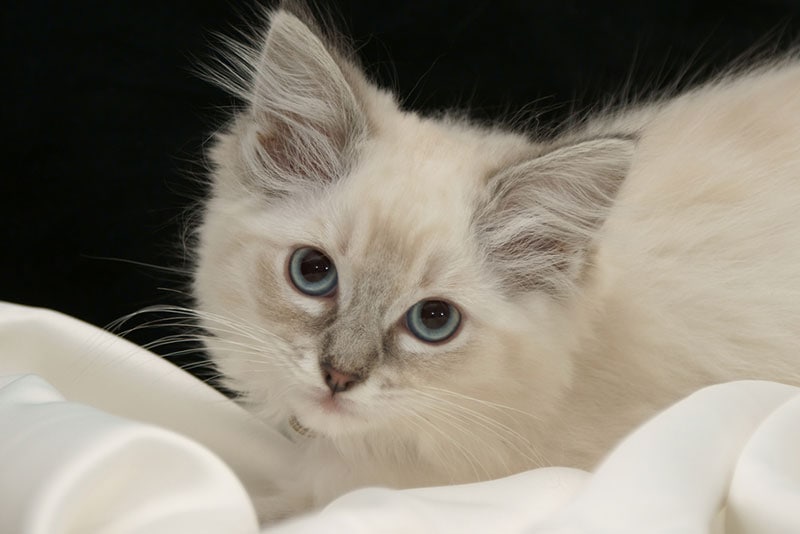
3. All Ragdolls Are Serious Lap Cats
Most cats like to keep to themselves, even when their human family members are at home. However, that’s not the case with Ragdolls. These cats want to spend as much time as possible sleeping or purring on a person’s lap, day and night.
4. Ragdolls Don’t Require Much Grooming Maintenance
Although Ragdolls have long, thick hair, it does not mat or knot up like it does with other long-haired cat breeds. Only about two brushing sessions each week are required to keep this breed’s coat in good shape.
5. Ragdolls Have a Few Known Health Conditions
While Ragdolls are generally healthy cats, they are prone to developing a few health conditions, including obesity, hairballs, urinary tract infections, and hypertrophic cardiomyopathy.
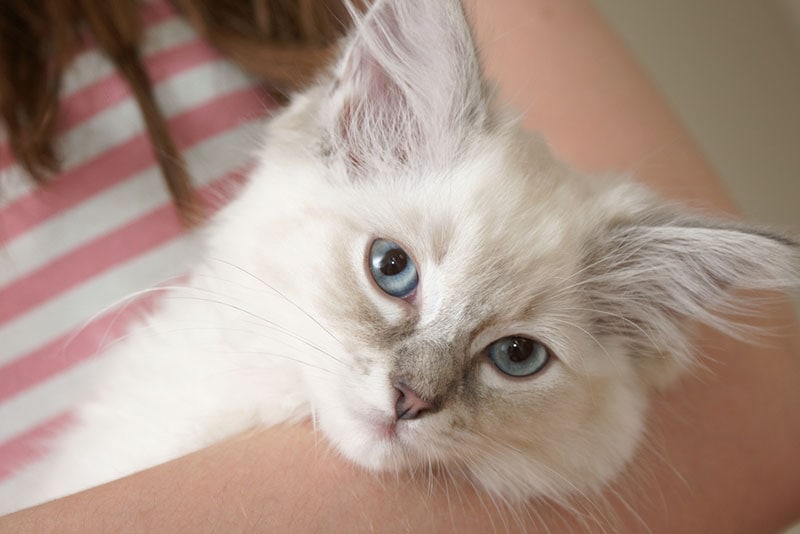
Does the Lilac Ragdoll Make a Good Pet?
Ragdoll cats in general make great pets because they are affectionate, loyal, and good with children. These laidback cats don’t mind hanging out at home alone during the day, but they do want a warm lap to sleep in when people are home. Ragdolls can be curious, but they prefer to spend their time in familiar places.
Conclusion
Lilac Ragdolls are beautiful creatures that don’t require much grooming despite their long, luscious hair. They are loving and loyal yet independent and playful. These cats make great pets, but they do require care, attention, and resources to maintain happy and healthy lives.
Featured Image Credit: cath5, Shutterstock






